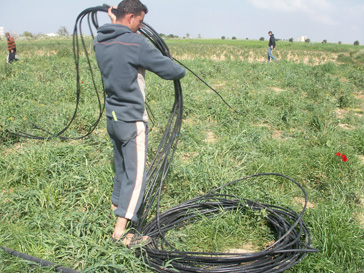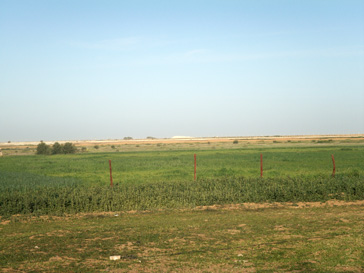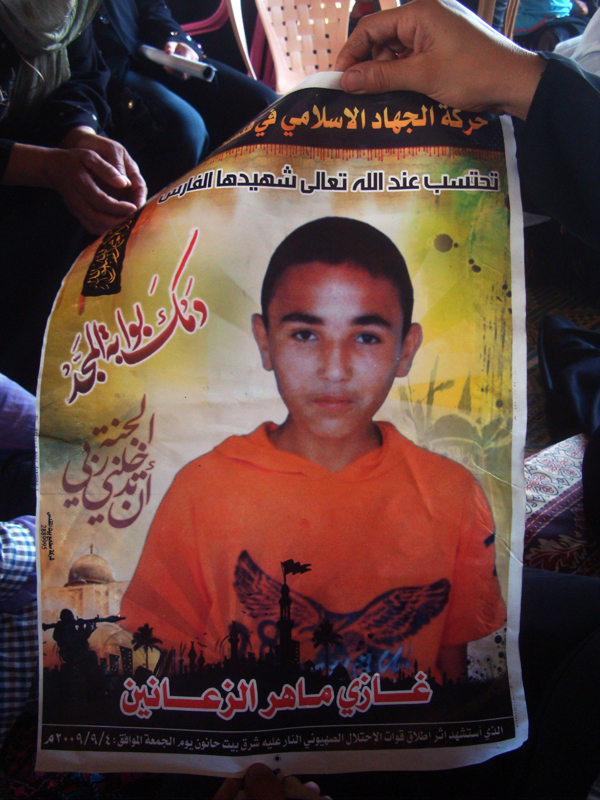http://www.youtube.com/watch?v=UQXecLyureE
“That wasn’t gunfire, it was construction work”.
“No, it was gunfire”.
“No, it wasn’t. It was construction work”.
Whizz.
“It’s gunfire - there was a whizz”.
“Really, I didn’t hear a whizz”.
“Yeah, there was a whizz.”
Crack. Crack. Crack. Crack. Whizz.
“Oh”.
It was a relaxed start to the gunfire. Everyone thinking it was construction work for a little while. Not unreasonably - there were bulldozers working not so far away.
It quickly picked up pace, however, with bullets flying thick and fast overhead. They sounded so close that many of us were ducking. Instinctively, I would drop my arms to cover my head - the noise often making it impossible for me to keep my arms in the air.
I was sure the donkey was going to get shot. Every so often I thought the donkey had been shot, as it shied nervously from the crack of gunfire so close - the rattle of its harness making me think the harness had been hit.

A friend from the media office called me, to ask if they were still shooting. “Yep”, I told him.
Crack. Crack. WHIZZ.
“I heard that bullet whizz past you!” he cried, sounding freaked out. More freaked out than me. Later, he called me to tell me he was really worried that I might die whilst on the phone to him. “Yeah”, I agreed. “That would be really crap. For you. Not so much for me”.
The farmers, who had decided they were going to stay even if there was shooting, decided to leave. The boss had gone off, and the decision was left with one of the workers. They decided not to die for their 20 shekels that day.
Again, as on Tuesday, the shooting intensified as we were leaving. Somehow it seemed scarier to be shot at while we were moving - the chance of walking into a bullet. Once we were out of range, they went nuts with the shooting - aiming at demolished houses.
“Are they trying to write their names?” asked one activist?
Whilst the farmers try to be brave, to harvest what is left of the crops with international accompaniment, there seems to be a realisation that this is not sustainable. They have seen their friend die, and they know they could be next.
In a number of plots within 1km of the electric fence that divides Gaza from southern Israel, farmers have been pulling up the irrigation systems whilst they have the chance. Materials like these are expensive and hard to get. Most likely they are brought through the tunnels.

removing the irrigation pipes
They are preparing to abandon these lands - to pull back to the 1km mark the Israelis are insisting upon, with their incessant gunfire. It’s just too dangerous to keep trying to farm there. Perhaps they will try to return to these lands later, when they feel like the situation is calmer - less dangerous. Or perhaps these lands, too, will be given up, as those within 300m of the Green Line have been.
Looking east from the village of Al Farahin, there is an uninterrupted view all the way to the Green Line. It was not always this way. Before 1st May 2008, the lands were filled with fruit-bearing trees - olives, citrus, avocado, almonds… In betweeen were many varieties of crops; and then a multitude of livestock. As Leila, a resident who can no longer live in her home because the proximity of the Green Line makes it too dangerous, recalls that, prior to May 08, she never used to have to shop. “We had everything there - chickens, eggs, fruit, vegetables, dairy - everything”. In May 08, however, Israeli soldiers crossed the Green Line and bulldozed the entire area.

view to the green line
Since then, aware that this could happen again at any moment, farmers plant only short-term crops that don’t require large investment - radishes; parsely; spinach; peas; beans. Even wheat is often seen as too risky, because the time between planting and harvesting is relatively long. It could easily be destroyed before farmers have a chance to harvest.
Now, since the war, even these crops have become impossible to plant, maintain and harvest. It is estimated that somewhere between 70-80% of Gaza’s agricultural land was destroyed during the recent Israeli attacks. The further sequestration of some 25 square kilometres (based on the length of the Israeli-Gaza border being 51km, and lands up to 500m from the border already declared off-limits for an Israeli “buffer zone”), of mostly agricultural land, works to devastate an already crippled industry; and render an entire segment of society - subsistance farmers - destitute.



